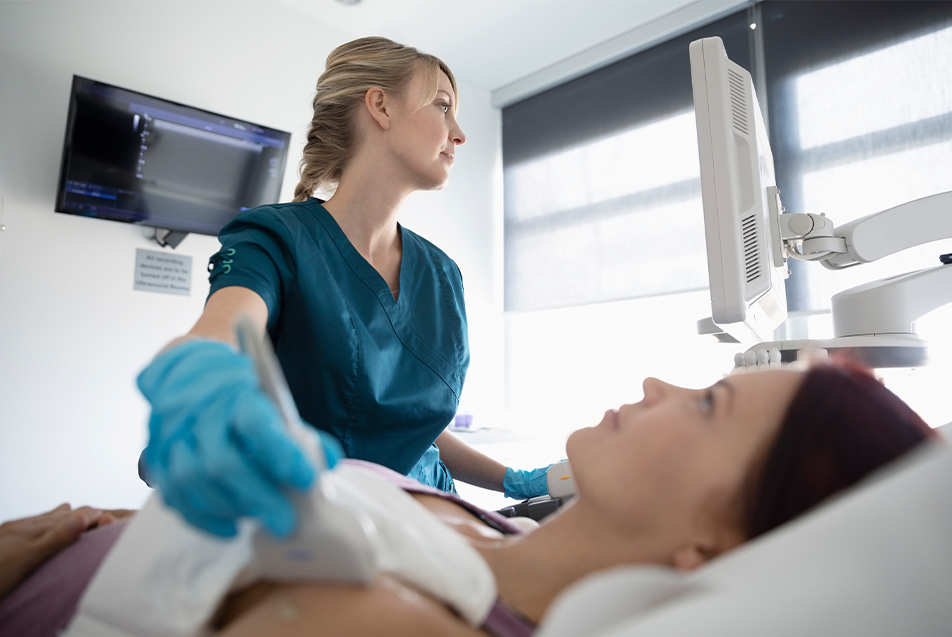
When it comes to gathering all of the information to make a formal diagnosis, ultrasound is often a vital piece of a patient’s case. We wanted to learn more about the technology and when it might be applied, so we reached out to Nistjatsha Burkholder, RVT, RDMS, diagnostic medical sonographer, who was happy to offer more about the types of ultrasound, its role in the diagnostic process and its safety.
How does ultrasound work?
Ultrasound uses high frequency sound waves to penetrate tissue in the body. Those sound waves are then reflected off various tissues, at different rates, and sent back to the transducer which creates a 2D ultrasound image.
What are the different types of ultrasound?
Ultrasound can be used to provide imaging for a wide variety of things. The three major types of ultrasounds are general, vascular and echocardiogram (echo). General ultrasound covers OB/GYN, abdominal organs and other small body parts. Vascular are ultrasounds of the arteries and veins in the body. With these, we are looking for thrombus (blood clot) within any vein and deep vein thrombosis (DVT) in the arms and legs, and stenosis or occlusions in the arteries of the body. With an echo, we’re looking at the structure of the heart and heart valves.
What role does ultrasound play in the diagnosis process?
Typically, ultrasound, in a more acute setting, is used to find the source of the patient’s pain and can be used in conjunction with other imaging modalities to evaluate pathology. Obviously, the more known type of ultrasound is the type used with obstetrics. We can help diagnosis fetal anomalies while the fetus is still in utero, which helps physicians develop a care plan and let’s parents better plan for the future.
What are some of the most common things you diagnose using ultrasound?
The most commonly diagnosed conditions with ultrasound in the Radiology Department would be DVTs, gallstones and ovarian cysts.
What are some of the lesser known things you can diagnose?
We scan a lot of pediatric patients here at Parkview to help diagnosis appendicitis and intussusception.
What are some of the challenges to ultrasound?
Ultrasound, like any modality, has strengths and weaknesses. We aren’t able to penetrate bone or through air. This becomes a challenge because we are not always able to clearly visualize pathology or organs we are evaluating due to natural body processes. Ultrasound is also completely dependent on the sonographer, which is unique from other imaging modalities.
Are there any risks associated with the technology?
There is no use of radiation with ultrasound to create an image and no adverse effects have been reported. This does make ultrasound a safer alternative. High frequency sound waves can heat the tissue and produce tiny microscopic bubbles called cavitations. This has been documented to damage tissue due to pressure. With this said, sonographers follow a standard of care, called ALARA (As Low As Reasonably Achievable), to ensure we put patients’ safety first. In layman’s terms, this means that we, as sonographers, use the least amount of power and time for our ultrasounds to ensure the lowest amount of exposer to sound waves while providing excellent care for the patients here at Parkview Health.



